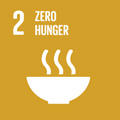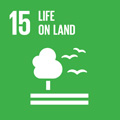- Docente: Ornella Francioso
- Credits: 6
- SSD: AGR/13
- Language: English
- Moduli: Ornella Francioso (Modulo Mod 1) Ornella Francioso (Modulo Mod 2)
- Teaching Mode: Traditional lectures (Modulo Mod 1) Traditional lectures (Modulo Mod 2)
- Campus: Bologna
- Corso: Second cycle degree programme (LM) in International Horticultural Science (cod. 8883)
-
from Feb 20, 2025 to Apr 10, 2025
-
from Mar 12, 2025 to May 16, 2025
Learning outcomes
Course Unit 1. Soil fertility (total 3 cfu). The aim of the course is to provide the student with the knowledge tools to deal, operationally and with chemical and biological skills, with soil fertility management. The main types of fertilizers and biostimulants in relation to their use will also be covered, and some industrial production processes will be described. At the end of the course, the student will have the ability to develop solutions for solving specific problems related to soil fertility management and conservation.
Course Unit 2. Secondary metabolism of plants (3 cfu). The fundamental learning objective of the course is to facilitate the acquisition of fundamental knowledge of the structure and physiological function of secondary metabolites, which are indispensable for comprehending the life processes of crops of agronomic significance. Upon completion of the course, students should be capable of delineating the secondary metabolic framework and describing, at the molecular level, the mechanisms that regulate metabolic functions, thereby ensuring the homeostasis of major secondary metabolites
Course contents
Course Unit 1. Soil fertility.
Biogeochemical cycles: Nitrogen: fixation, mineralization, immobilization, organication, nitrification and denitrification. Phosphate: immobilization and mineralization of phosphorus; Sulphur: reduction of sulphate and oxidation of Sulphur.Potassium, Calcium, Magnesium and Iron. Mineral and organic fertilizers and factors affecting their availability. Biostimulants and chelates. Recycling and use of biomass from agro-waste in agriculture.
Course Unit 2. Secondary metabolism of plants
Primary metabolism vs secondary metabolism.
The classes of secondary metabolites and functions:
Terpenes and biosynthetic pathway
Alkaloids and biosynthetic pathway
Phenols and biosynthetic pathway
Readings/Bibliography
Biochemistry of plant secondary metabolism / edited by Michael Wink Sheffield : Sheffield academic; Boca Raton, Fla.: CRC, 1999
Mengel K. and Kirkby E. A. (2001). Principles of Plant Nutrition. 5th Edition. Pp. 849. Kluwer Academic Publishers, Dordrecht, Boston, London.
Marschner H. (1995). Mineral Nutrition of Higher Plants. 2nd Ed. Academic Press
Teaching methods
The course consists of lectures (50 hours), seminars offered by researchers from other institutions to supplement the lectures and study visits to companies in the area
Assessment methods
The final assessment consists of an oral presentation on two topics on soil fertility and secondary plant metabolites. The duration of the exam is approximately 20 minutes.
The grade is given considering the overall preparation of the student and, in detail, on the property of language, the ability to make connections between the two topics and analytical ability
Teaching tools
Topics presented during the lesson are shared with students in class and uploaded to Online Virtual.
Office hours
See the website of Ornella Francioso
SDGs




This teaching activity contributes to the achievement of the Sustainable Development Goals of the UN 2030 Agenda.
